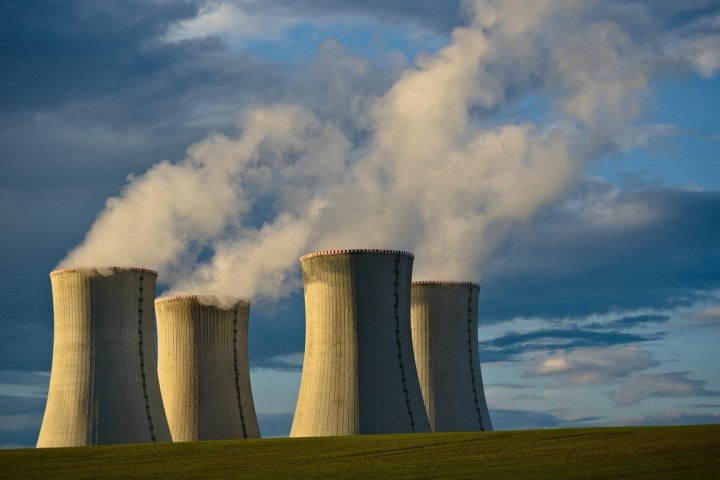Small nuclear reactors: what we know about the EU’s future industry alliance

The alliance on small modular reactors (SMRs) is due to be launched “at the beginning of 2024”, the EU’s internal market commissioner Thierry Breton announced Tuesday (28 November) at the opening of the World Nuclear Exhibition in Paris.
The launch date could even be as early as “February”, according to French Renew MEP and staunch nuclear supporter Christophe Grudler.
A long-standing plea from the nuclear industry, the initiative was first announced by EU energy commissioner Kadri Simson at the European Nuclear Energy Forum in Bratislava in early November.
“The Commission will carry out all the preparatory work with a view to launching the Industrial Alliance in the coming months,” she said.
In other words, a new wind seems to be blowing in Europe, as “nuclear power is no longer a taboo, even within the European Commission,” Breton told the WNE.
Bringing together the industry
Like other industry alliances supervised by the Commission, the purpose of the SMR alliance is to bring together existing industry players, research organisations, government officials, and civil society groups to accelerate the development of the industry.
The alliance’s work is initially expected to focus on SMRs based on proven third-generation nuclear technologies, Euractiv understands.
But “although this alliance will mainly focus on third-generation SMRs, it will also cover advanced modular reactors (AMRs),” confirmed Nuclear Europe, the EU industry association.
The European Commission has reportedly been reluctant to include fourth-generation technologies in the alliance, fearing it could become a “research and development organisation”.
But Grudler insists it is “essential to support all generations of SMRs”.
Structure
According to a draft organisational chart seen by Euractiv, the alliance will be organised across seven working groups:
“Development”, bringing together end-users, vendors and developers;
“Public acceptance”, bringing together civil society, the European Economic and Social Committee and NGOs;
“Financing”, bringing together member states and developers;
“Fuel Cycle”, also bringing together member states and developers;
“Workforce and skills”, bringing together supply chain actors and developers;
“Research”, bringing together those involved in research and development community, industry community and licensing parties;
“Security”, whose members have yet to be defined.
These groups would be overseen by a board made up of EU member states, and the European Nuclear Safety Regulators Group (ENSREG), and a steering committee made up of Nuclear Europe and the Sustainable Nuclear Energy Technology Platform (SNETP) – all with the support of the European Commission.
“At this stage, many companies have expressed interest in this alliance, but we cannot yet provide a concrete list of companies/organisations that are expected to join,” says Nuclear Europe. Membership criteria have yet to be defined, it adds.
The association for the defence of nuclear power, Voices of Nuclear, told Euractiv that “if a stakeholder group is set up, we could play a part in it.”
An annual stakeholder forum would also be organised.
Ongoing work
As for the alliance’s work, it can be broken down into four phases, with the first two devoted to project Design, the third to Demonstrator and the last to Deployment.
For now, the focus is to compile work already carried out since the 2021 Pre-Partnership.
“We need to prove to the European Commission that the players in the sector are developing the human, financial, technical and diplomatic resources to match their ambitions,” explains Grudler.
The French MEP also defends the idea that SMRs could eventually be supported by an Important Project of Common European Interest (IPCEI) to facilitate their financing without running the risk of breaking EU state aid rules.
“This could be decided very quickly once the alliance is launched,” he told Euractiv France.
Indeed, IPCEIs have already been set up for other similar industrial alliances, such as those previously formed on hydrogen, solar and batteries.
Grey zones
Pending the alliance’s launch, stakeholders are working hard to ensure EU legislation follows suit.
“We need to go back on the European texts that exclude nuclear power from a certain number of measures”, says Valérie Faudon, Executive Delegate of the French Nuclear Energy Society (SFEN), an association that defends the interests of the nuclear industry.
In the same vein, Grudler will be “keeping a close eye on the launch of the alliance”, starting with the vote in the European Parliament on 14 December on the own-initiative report on SMR tabled by conservative Slovenian MEP Franc Bogovič.
“It will also be the first time since the start of the European Parliament’s term of office that a 100% nuclear text will be put to the vote,” Grudler noted.
“If the vote fails, I am not sure that the European Commission will want to launch such an initiative before the end of its term of office [October 2024]”, he fears.
The vote is thus to be viewed as the very first full-scale test at a time when Euractiv France understands that some in the European Commission are questioning the wisdom of launching such an alliance so close to the EU elections.

